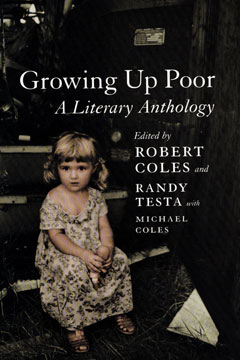
The study found that poverty played a role, even when race, gender, parent’s education, and other factors were taken into account. While roughly 37 percent of children who were never poor completed college by age 25, only 3 percent of children from persistently poor backgrounds were able to do the same. A 2015 report from the Urban Institute found that 23 percent of children who spent at least half their childhood in poverty enrolled in postsecondary education by age 25, compared to 70 percent of children who were never poor. The gaps only widen when it comes to college. By comparison, that number was 90 percent for those who never experienced poverty. In a 2017 report from the Urban Institute, researchers found that 62 percent of children who spent at least half their childhoods in poverty went on to attain a high school diploma by age 20. Whether it’s because they didn’t have access to good schools, or their parents didn’t have the time or resources to help them, children who grow up in poverty often start at a disadvantage that can make it harder to achieve later in life. One factor at play for why poor children go on to struggle as adults is education. The longer you grow up in poverty, the harder it is to graduate For those who spent eight to 14 years in poverty as children, 46 percent were poor at age 20, and 40 percent were poor at age 25. If they were poor anywhere from one to seven years as a kid, that number went up to approximately 13 percent. For example, in one 2009 study by the National Center for Children in Poverty at Columbia University, researchers found that children who grew up poor were not only more likely to experience poverty as adults, but that the likelihood of being poor in adulthood went up with the number of years spent in poverty as a child.Īccording to the study, around five percent of adults who never experienced poverty as children were poor at ages 20 and 25. Studies show that children who grow up poor have a harder time escaping poverty as adults. Here are just a few ways how: Children who grow up poor are more likely to be poor as adults There are the obvious side-effects of growing up in poverty: deprivation, worry, and sometimes hunger and the risk of homelessness.īut just as troubling, experts say, is that growing up in a poor household is linked with long-term consequences in educational outcomes, physical health and brain development that can follow a child well into adulthood.

While white children experience poverty at a rate of 11 percent, around 27 percent of Hispanic children, 31 percent of black children and 34 percent of Native American children in America today are growing up poor.

The problem is particularly acute for children of color. In fact, while the national poverty rate sits at 14 percent, for children, it’s 18 percent. Today, five years after America went through the worst economic crisis since the Great Depression, children are still more likely to live in poverty than adults. At the height of the recession in 2012, nearly one in four American children were living in poverty.


 0 kommentar(er)
0 kommentar(er)
